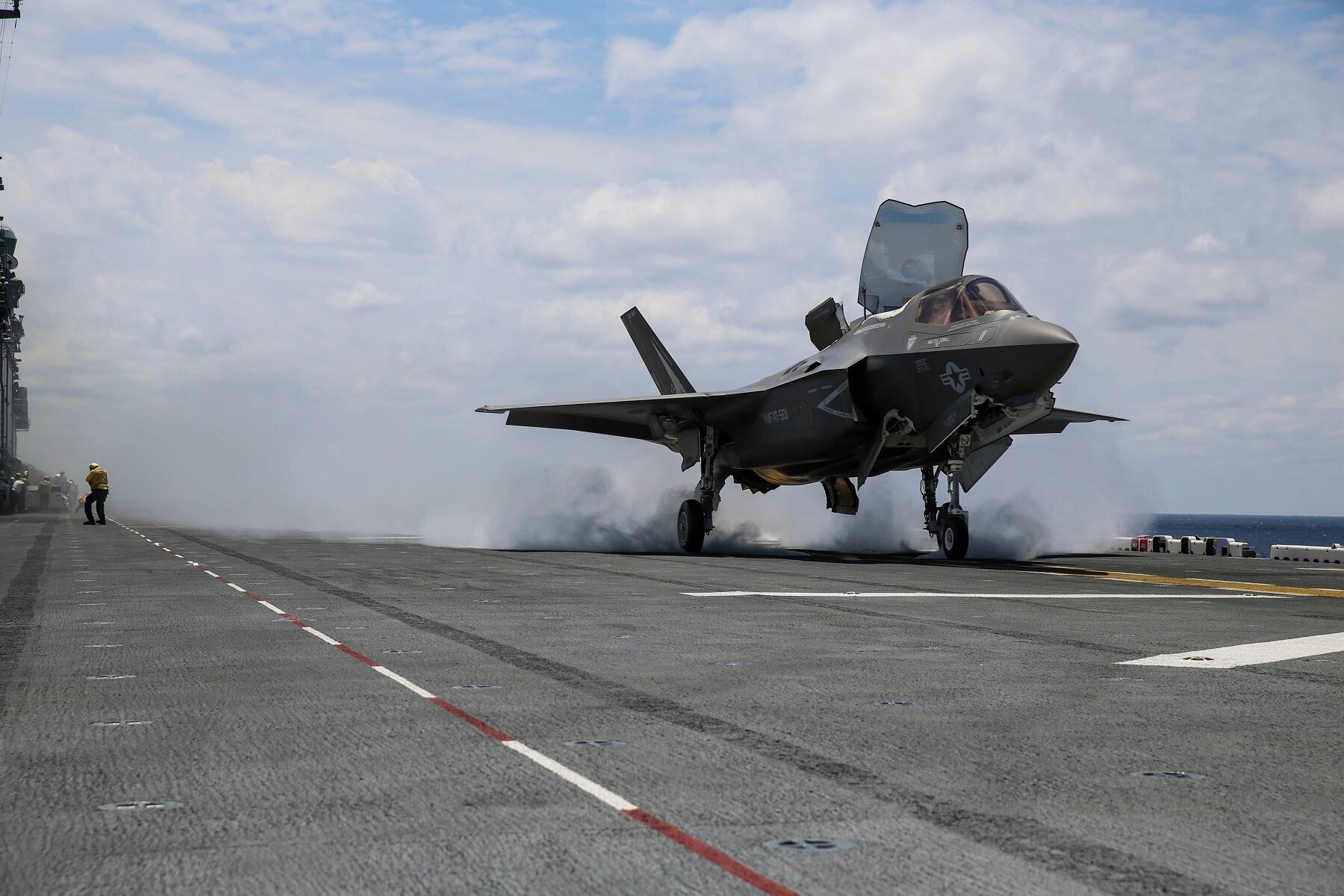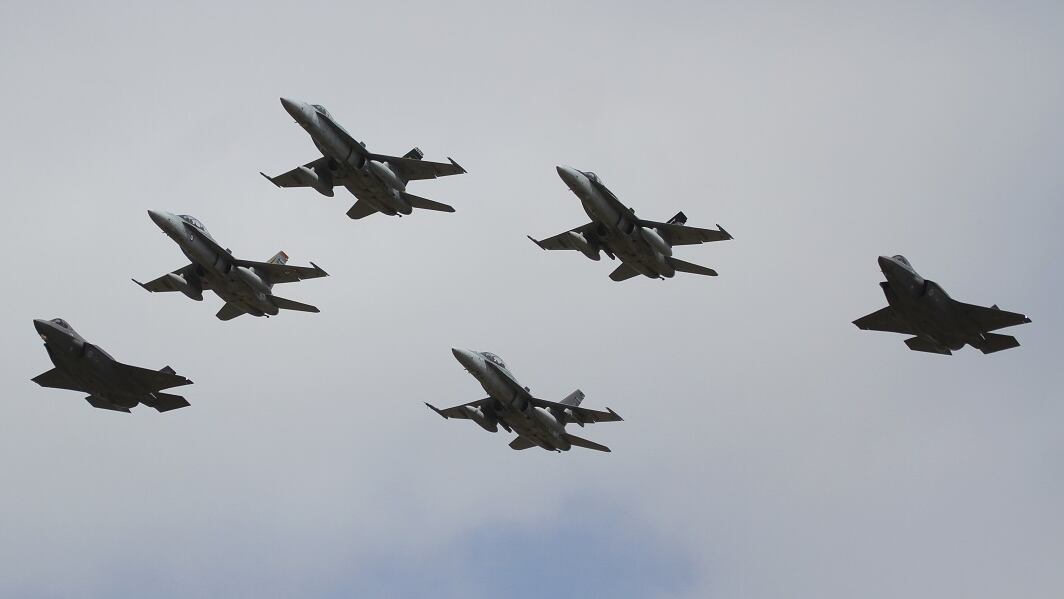WASHINGTON — The Pentagon is banking on agile software development to keep the F-35 Joint Strike Fighter capable of evolving to beat looming threats, but a new report questions the department’s ability to keep on top of continual software updates.
In 2018, the F-35 program shifted to an agile software development model, known as DevOps among coders and as Continuous Capability Development and Delivery (C2D2) within the program. The goal, according to program leaders, was to push out incremental software improvements and corrections to past deficiencies on a quicker pace rather than implementing a large update once a year or so.
However, Robert Behler, the Pentagon’s independent weapons tester, characterizes the current schedule for C2D2 as “high risk” and said the program office is struggling to stay on schedule, he said in an annual report published Jan. 30 by the Operational Test and Evaluation Office.
“The current Continuous Capability Development and Delivery (C2D2) process has not been able to keep pace with adding new increments of capability as planned,” the office’s director wrote. “Software changes, intended to introduce new capabilities or fix deficiencies, often introduced stability problems and adversely affected other functionality.”
RELATED

Under the C2D2 construct, F-35s are set to receive software updates every six months. That leaves little time to test out the new code, often resulting in “significant” bugs being discovered in the field, Behler wrote.
To prove out new software, the program office intends to rely more on modeling and simulation tools like the Joint Simulation Environment, which emulates high-end threats. However, the DOT&E report states that the Pentagon needs to adequately fund these simulation tools, and that as of the writing of the report, no significant changes to the F-35’s existing laboratories or simulation environments had occurred, the report said.
A spokesperson for F-35 Joint Program Office did not immediately respond to a request for comment.
In a statement, Lockheed Martin said that the F-35 is “the most lethal, survivable and connected fighter in the world” and that the company was driving down costs and improving reliability.
Here were the other big takeaways from the report:
ALIS is still problematic
The F-35’s logistics system, called the Autonomic Logistics Information System, or ALIS, is used for many functions, including mission planning, ordering parts and diagnosing maintenance issues. But while ALIS is showing some improvements to its overall functionality, it’s still prone to glitches and slow processing time.
RELATED

The F-35 program office intends to transition from ALIS to a cloud-native logistics system called Operational Data Integrated Network, or ODIN, over the next couple years.
Unlike ALIS, which was developed by Lockheed Martin, ODIN will be government-owned and co-developed by the Defense Department and Lockheed, with the first batch of ODIN hardware expected to be delivered this year, the Joint Program Office said in a Jan. 21 statement. A full ODIN capability is to be fielded in December 2022.
The DOT&E report applauds the F-35 program for taking some “innovative approaches” through ODIN and an agile software development effort called Mad Hatter, but it also questions whether the program is investing enough in those efforts.
Meanwhile, ALIS continues to be plagued with issues, even as updates introduce improvements.

“ALIS remains inefficient and cumbersome to use, still requires the use of numerous workarounds, retains problems with data accuracy and integrity, and requires excessive time from support personnel,” the report stated. “As a result, it does not efficiently enable sortie generation and aircraft availability as intended. Users continue to lack confidence in ALIS functionality and stability.”
Although DOT&E noted that users reported faster processing times for certain functions like pilot debriefing or extracting propulsion system data from portable memory devices, response times for other functions became slower.
A new software update, ALIS 3.5, was planned to be released last October, but was delayed to January 2020 due to a number of deficiencies. Once it is fielded, ALIS 3.5 might help improve assessments of the F-35’s stealth coating and lower the time it takes to process data from the Production Aircraft Inspection Reporting System.
However, DOT&E urged the F-35 program to do more to correct ALIS’s Electronic Equipment Logbook data, which follow spare parts through the supply chain and frequently contain errors that need to be corrected by maintainers in the field. That process remains a “major ALIS degrader, frequent source of user complaints, and a major ALIS administrator burden,” the report found.
Things are looking hopeful for the Joint Simulation Environment
Last year, the Defense Department announced it was delaying the full-rate production decision for the F-35, which was slated to occur in December and now won’t occur until January 2021. Although Lockheed is already manufacturing F-35s at what is considered “full rate,” as it delivered 134 jets in 2019, the department’s formal signoff on the full-rate production is an important, symbolic signifier that the program has made it past operational testing and is now mature.
The problem is that operational tests won’t be complete until the F-35 is put through its paces in the Joint Simulation Environment, which allows the Pentagon to conduct simulated evaluations of the F-35 in a range of high-threat scenarios. And the JSE won’t be ready until July 2020, according to DOT&E.
However, the F-35 program office looks like it is on track to meet that timeline. Behler wrote that the “JSE team was consistently meeting most planned timelines and appeared to be on a path to provide” a simulator for operational tests this summer.
The team made “slow progress” in 2019, with integrating F-35 in-a-box software — a simulated representation of the F-35 air vehicle and its aerodynamic performance — but that progress improved as the year went on, and the work is likely to meet requirements, DOT&E stated. The report also pointed to progress on correcting JSE problems concerning weapons, sensor functions and overall JSE stability.
Valerie Insinna is Defense News' air warfare reporter. She previously worked the Navy/congressional beats for Defense Daily, which followed almost three years as a staff writer for National Defense Magazine. Prior to that, she worked as an editorial assistant for the Tokyo Shimbun’s Washington bureau.








